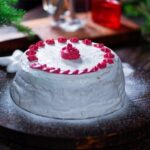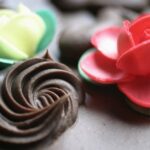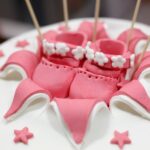Are you looking for ideas on how to decorate Easter cakes? Easter is a time for celebrating, and what better way to celebrate than with a delicious and beautifully decorated cake? In this article, we’ll explore the art of decorating Easter cakes, from the rich history of these festive treats to essential tools and equipment needed for decorating, as well as exploring unique cake flavors and shapes perfect for Easter.
Easter cakes have been a tradition for centuries, with roots in various cultures around the world. From the iconic simnel cake to the modern-day bunny-shaped confections, these cakes hold a special place in holiday celebrations. Decorating Easter cakes adds an extra touch of joy and festivity to these delicious desserts, making them a centerpiece at any Easter gathering.
Whether you’re an experienced baker or just starting out, there are essential tools and equipment needed for decorating Easter cakes that can make the process easier and more enjoyable. We’ll provide a list of basic tools needed and offer tips on where to purchase or find these items.
Plus, we’ll share some expert tips on choosing the right cake flavor and shape for Easter, as well as basic icing and frosting techniques to achieve professional-looking results. So let’s dive in and discover how to make your Easter cakes as beautiful as they are delicious.
Essential Tools and Equipment for Decorating Easter Cakes
When it comes to decorating Easter cakes, having the right tools and equipment is essential to create a beautiful and festive dessert. Whether you’re a beginner or an experienced baker, there are certain items that are necessary for achieving professional-looking decorations. Here are some essential tools and equipment for decorating Easter cakes:
- Piping bags and tips: These are essential for creating intricate designs with icing or frosting. There are different types of piping tips that can be used to achieve various effects, such as flowers, leaves, or writing.
- Offset spatula: An offset spatula is useful for spreading and smoothing icing or frosting onto the cake. It allows for precise control and helps in achieving even layers.
- Cake turntable: A cake turntable makes the process of decorating a cake much easier by allowing you to easily rotate the cake as you work on it. This helps in achieving smooth and consistent decorations.
- Fondant tools: If you plan on using fondant to decorate your Easter cake, you will need tools such as a rolling pin, fondant smoother, and embossing tools. These will help in shaping, smoothing, and adding texture to the fondant.
When looking for these essential tools and equipment for decorating Easter cakes, you can find them at specialty baking stores, craft stores, or online retailers. It’s important to invest in quality items that will last long and make the decoration process more enjoyable. Remember that having the right tools can make a significant difference in the outcome of your decorated Easter cake.
Choosing the Right Cake Flavor and Shape for Easter
When it comes to choosing the right cake flavor and shape for Easter, there are several factors to consider. The flavors of Easter cakes often reflect the fresh, light, and sweet tastes associated with the holiday. Some popular flavors include lemon, carrot, coconut, and vanilla. These flavors evoke feelings of springtime and are often well-received by guests at Easter gatherings.
In addition to choosing the right flavor, the shape of the cake can also contribute to the overall theme of Easter. While traditional round or rectangular cakes are always a safe bet, many bakers opt for more festive shapes such as bunnies, eggs, or even crosses to tie into the religious significance of the holiday. These unique shapes add an extra element of creativity and fun to the Easter dessert table.
For those looking to make a truly memorable Easter cake, experimenting with different flavors and shapes can be a great way to showcase one’s creativity in baking. Whether it’s a classic carrot cake in the shape of a rabbit or a lemon-flavored cake in the shape of an egg, there are endless options for creating a show-stopping dessert that will delight friends and family during this special time of year.
Basic Icing and Frosting Techniques
When it comes to decorating Easter cakes, mastering basic icing and frosting techniques is essential for achieving a professional and beautiful finish. Whether you’re a beginner or an experienced baker, having a good understanding of how to make and apply icing/frosting can make all the difference in your cake decorating endeavors.
To start, it’s important to have the necessary tools and equipment on hand. This includes an offset spatula for spreading the icing, a turntable for easy rotating of the cake, piping bags and tips for more intricate designs, and a bench scraper for creating smooth surfaces. These items can be found at most baking supply stores or online retailers. Investing in quality tools will not only make the decorating process easier but also result in a better-looking cake.
The key to achieving smooth and even layers of icing or frosting starts with properly preparing your cake. It’s important to let your cake cool completely before applying any icing. Once it’s ready, a thin layer of crumb coat should be applied first to trap any loose crumbs.
After letting this layer set, proceed with adding more frosting to create the final design. Using long strokes with the offset spatula will help achieve an even surface. And don’t forget to pay attention to the sides of the cake too.
Creative Easter Cake Decorating Ideas
When it comes to decorating Easter cakes, the possibilities are endless. Some popular ideas for Easter-themed cake toppers and decorations include edible sugar flowers, mini chocolate eggs, fondant bunnies, chicks, carrots, and even edible grass made from shredded coconut dyed with natural food coloring. These whimsical decorations can be easily purchased at your local baking supply store or online. However, if you’re feeling particularly creative, you can also try making these decorations yourself using fondant or gum paste.
Unique Design Inspiration for Easter Cakes
For a unique twist on traditional Easter cake designs, consider incorporating pastel colors and floral patterns. One popular trend is the use of watercolor techniques on cakes to create a soft, dreamy effect. Another idea is to create a “nest” on top of the cake using toasted coconut or edible hay, then fill it with colorful candy eggs. Additionally, you can experiment with different textures such as ruffles or marbling to add visual interest to your Easter cake.
Incorporating religious symbols such as crosses or doves can also be a meaningful way to decorate an Easter cake, especially for those celebrating the religious aspect of the holiday. No matter which design you choose, the key is to let your creativity shine and have fun with the decorating process.
For many people celebrating Easter for its religious significance, incorporating meaningful symbols into their decorated cakes is an essential part of this holiday tradition. crosses or doves can add a spiritual touch to any Easter cake while still being visually stunning.
Overall, when it comes to decorating Easter cakes, there’s no right or wrong way to do it – as long as it reflects your personal style and brings joy to those who will be enjoying it.
Using Natural Food Dyes for Colorful Easter Cakes
When it comes to decorating Easter cakes, using natural food dyes can add a fun and vibrant touch to your creations. Making natural dyes from fruits and vegetables is not only a healthier alternative to artificial food coloring but also allows you to achieve beautiful pastel and vivid colors for your Easter cakes. Some common ingredients for making natural food dyes include beets for red/pink, turmeric for yellow, spinach for green, and blueberries for purple/blue.
To make natural food dyes from these ingredients, simply simmer the fruit or vegetable in water until the desired color is achieved. Then strain the liquid and let it cool before using it to color your icing or cake batter. You can also adjust the intensity of the color by adding more or less of the natural dye to your mixture.
For achieving vibrant and pastel colors with natural food dyes, it’s important to keep in mind that the colors may not be as intense as those produced by artificial food coloring. However, layering different shades of natural dyes can create a beautiful ombre effect on your Easter cake. Additionally, consider experimenting with different combinations of fruits and vegetables to create unique and unexpected shades for your Easter cake decorations.
Using natural food dyes not only adds visual appeal to your Easter cakes but also provides a wholesome and eco-friendly option for creating colorful treats. By incorporating these natural ingredients into your cake decorating process, you can enhance the overall experience of celebrating Easter through delightful and naturally colored confections.
| Ingredient | Natural Dye Color |
|---|---|
| Beets | Red/Pink |
| Turmeric | Yellow |
| Spinach | Green |
| Blueberries | Purple/Blue |
Advanced Decorating Techniques for Experienced Bakers
For those who are experienced in baking and decorating, Easter presents an opportunity to showcase your skills with more intricate designs and decorations. It’s the perfect time to push your creativity to the next level and impress friends and family with show-stopping Easter cakes.
Piping Intricate Designs With Royal Icing
One of the most elegant ways to decorate Easter cakes is by piping intricate designs with royal icing. This technique allows you to create delicate lace patterns, floral motifs, and intricate borders that can elevate the look of your cake. To achieve professional results, it’s essential to have a steady hand and some experience with piping techniques. Practice on parchment paper before attempting to pipe directly onto the cake.
Creating 3D Decorations With Fondant
Fondant is a versatile medium that can be sculpted and shaped into 3D decorations such as flowers, figurines, and animals. Experienced bakers can take their Easter cake decorating to the next level by incorporating fondant sculptures into their designs. Whether it’s a whimsical bunny perched on top of the cake or a field of blooming flowers cascading down the sides, fondant decorations add an impressive touch to Easter cakes.
Whether you choose to master the art of royal icing piping or create stunning 3D fondant decorations, advanced decorating techniques for experienced bakers allow for endless possibilities when it comes to Easter cake decoration. These techniques require patience, practice, and a steady hand but can result in truly impressive and memorable creations that will be the highlight of any Easter celebration.
Tips for Storing and Presenting Decorated Easter Cakes
Storing and presenting your beautifully decorated Easter cakes is just as important as the decorating process itself. To maintain the freshness and appearance of your creation, it’s essential to store it properly. Firstly, make sure that your cake is completely cooled before wrapping it in plastic wrap or aluminum foil to prevent it from drying out. You can also opt to store it in an airtight container to retain its moisture.
When it comes to presenting your decorated Easter cake, the options are endless. For a simple yet elegant presentation, consider using a decorative cake stand that complements the theme of your cake. Alternatively, you can place your cake on a bed of fresh flowers for a stunning springtime display.
For those hosting Easter gatherings, consider incorporating your decorated cake into the overall table centerpiece. Surrounding the cake with Easter-themed decorations such as dyed eggs, bunnies, or chicks can create a festive and inviting atmosphere for your guests. Whether you choose to display your masterpiece as the highlight of your dessert table or as part of the main spread, be sure to showcase all the hard work and creativity you put into decorating it.
Conclusion
In conclusion, decorating Easter cakes is not only a tradition but also a creative and enjoyable activity that can bring joy to family and friends during the holiday season. From the essential tools and equipment needed to the choice of cake flavor and shape, we have discussed the various aspects of creating beautiful Easter cakes. Whether you are a beginner or an experienced baker, there are endless possibilities for decorating Easter cakes.
Throughout this article, we have emphasized the importance of creativity and experimentation when it comes to decorating Easter cakes. From natural food dyes to advanced techniques like piping intricate designs and creating 3D decorations with fondant, there is something for everyone to try. The key is to have fun in the process and let your imagination run wild.
As Easter approaches, we encourage our readers to unleash their creativity and take pleasure in decorating their Easter cakes. Whether it’s using unique cake toppers, experimenting with natural food dyes, or trying advanced decorating techniques, remember that there are no limits to what you can create. We hope this article has inspired you to make this Easter season extra special with beautifully decorated cakes that will be the highlight of your celebrations.
Frequently Asked Questions
What Can I Put on a Cake Instead of Frosting?
Instead of frosting, there are a few alternatives you can consider for topping a cake. Whipped cream is a popular choice, as it is light and not overly sweet.
Fresh fruit, such as berries or slices of kiwi, can also add a pop of color and natural sweetness to the cake. Another option is a glaze made from powdered sugar and citrus juice, which can give the cake a tangy finish without being too heavy.
What Kind of Cake Is Good for Easter?
When it comes to Easter cakes, lighter flavors and pastel colors are often preferred. A lemon cake with a raspberry filling or a carrot cake with cream cheese frosting are both great choices for the holiday. You could also opt for a classic vanilla or almond cake with spring-inspired decorations like edible flowers or mini chocolate eggs on top.
How to Decorate a Cake Easy?
Decorating a cake can be made easy by using simple techniques and tools. One easy way to decorate a cake is by using stencils to create patterns with powdered sugar or cocoa powder.
Another simple technique is using fresh flowers to adorn the cake – just make sure they are safe for consumption if they will come in contact with the frosting. And finally, adding fresh fruit on top of the frosted cake in an artful way can be an effortless yet stunning decoration method.

Welcome to my blog about home and family. This blog is a place where I will share my thoughts, ideas, and experiences related to these important topics. I am a stay-at-home mom with two young children. I hope you enjoy reading it! and may find some helpful tips and ideas that will make your home and family life even better!





